AXLES
Sopopop
Bearing Types
• opopop
Bearing Information for Common Material Handling Tire and Wheel Applications
Single Row Radial Ball Bearing
Front
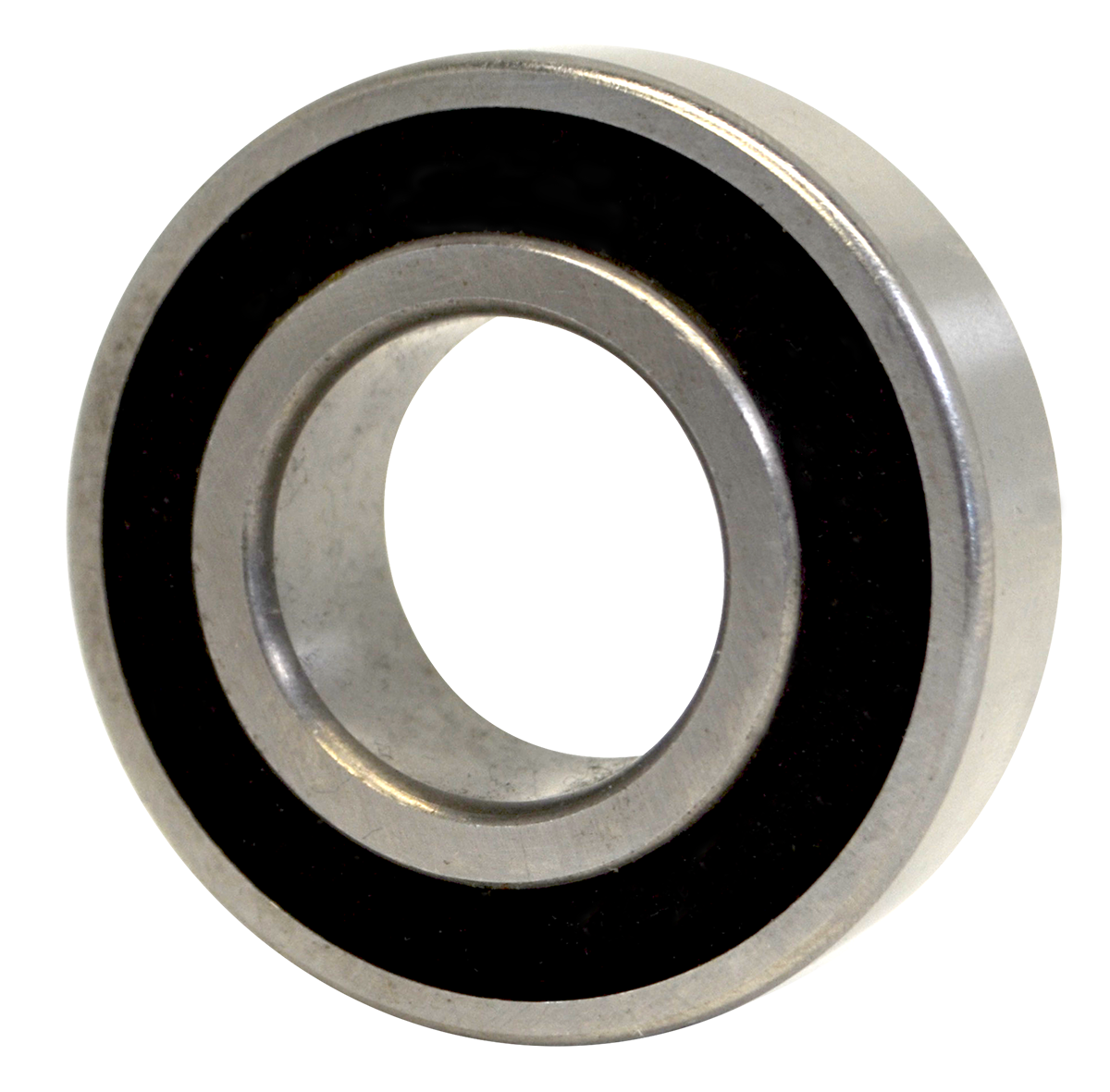
Back
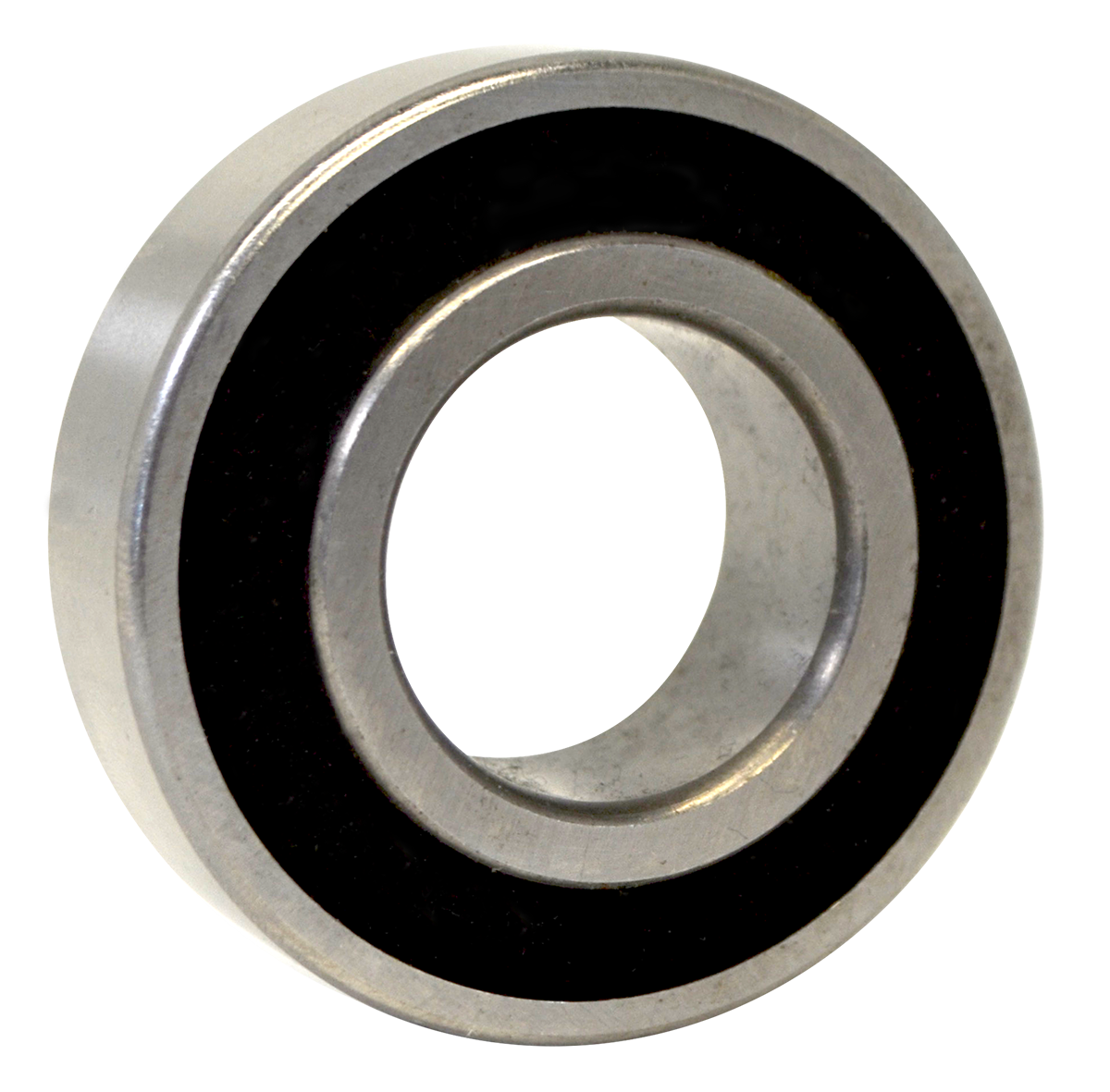
Code | NSK – DDU Timken – PP SKF – 2RS NTN – LLU |
Main Function, Benefit, and Concern | • Non-Greaseable (NG) •Pre-packed grease contained within rubber seals • Maintenance Free • Rubber seals have full contact on both inner and outer race • Rubber seals heat up and can melt down if used in high speed – leaking grease • Rubber seals are sensitive to chemical attack – special rubber seals are required for some environments • Grease cannot be refilled to replace deteriorated old grease |
Where Used | • Fork, Outrigger and Stabilizing Caster Load Wheel • Single direction of force (radial load) – limited thrust load capacity • Low-Medium Speed and NonContinuous Run • Clean facility, frequent washdown or wet conditions |
Front
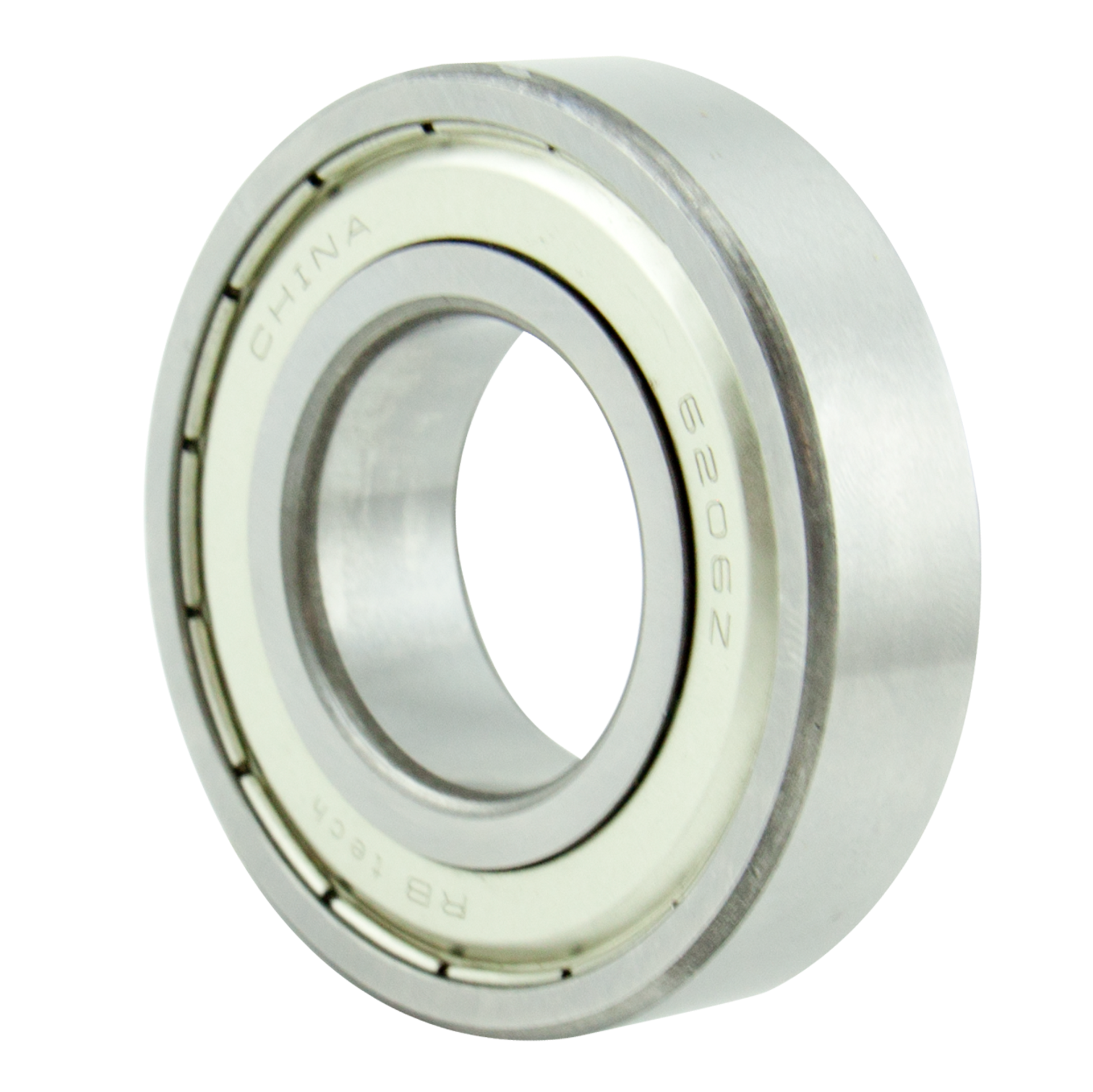
Back
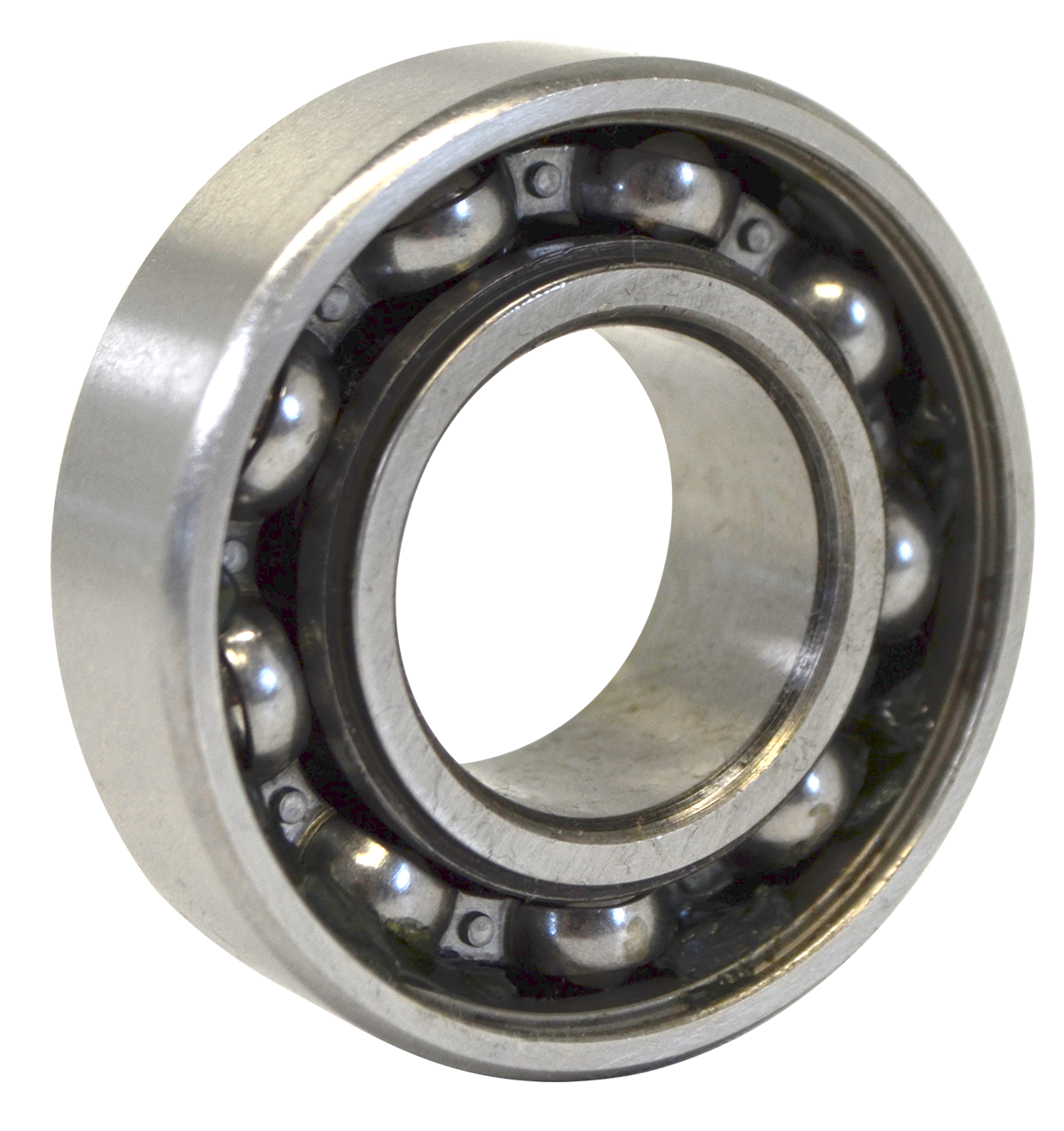
Code | NSK – Z Timken – D SKF – Z NTN – Z |
Main Function, Benefit, and Concern | • Greaseable (G) • Maintenance Required • Metal shield does not make sealed contact – no heat buildup in high speed run • Shield does not completely prevent grease leakage but allows grease to effectively fill the bearing during maintenance • Shield prevents debris from entering into the bearing |
Where Used | • Fork, Outrigger and Stabilizing Caster Load Wheel • Single direction of force (radial load) – limited thrust load capacity • Long and continuous run |
Front

Back

Code | NSK – DU Timken – P SKF – RS NTN – LU |
Main Function, Benefit, and Concern | • Greaseable (G) – for specific design only • Requires extra hole in axle to release trapped air while greasing • Almost maintenance free when used in low speed application • Maintenance is required if used in high speed application due to leaking grease • Rubber seals are sensitive to chemical attack – special rubber seals are required for some environments |
Where Used | • Fork, Outrigger and Stabilizing Caster Load Wheel • Single direction of force (radial load) – limited thrust load capacity • Can be used in long and continuous ru |
Front
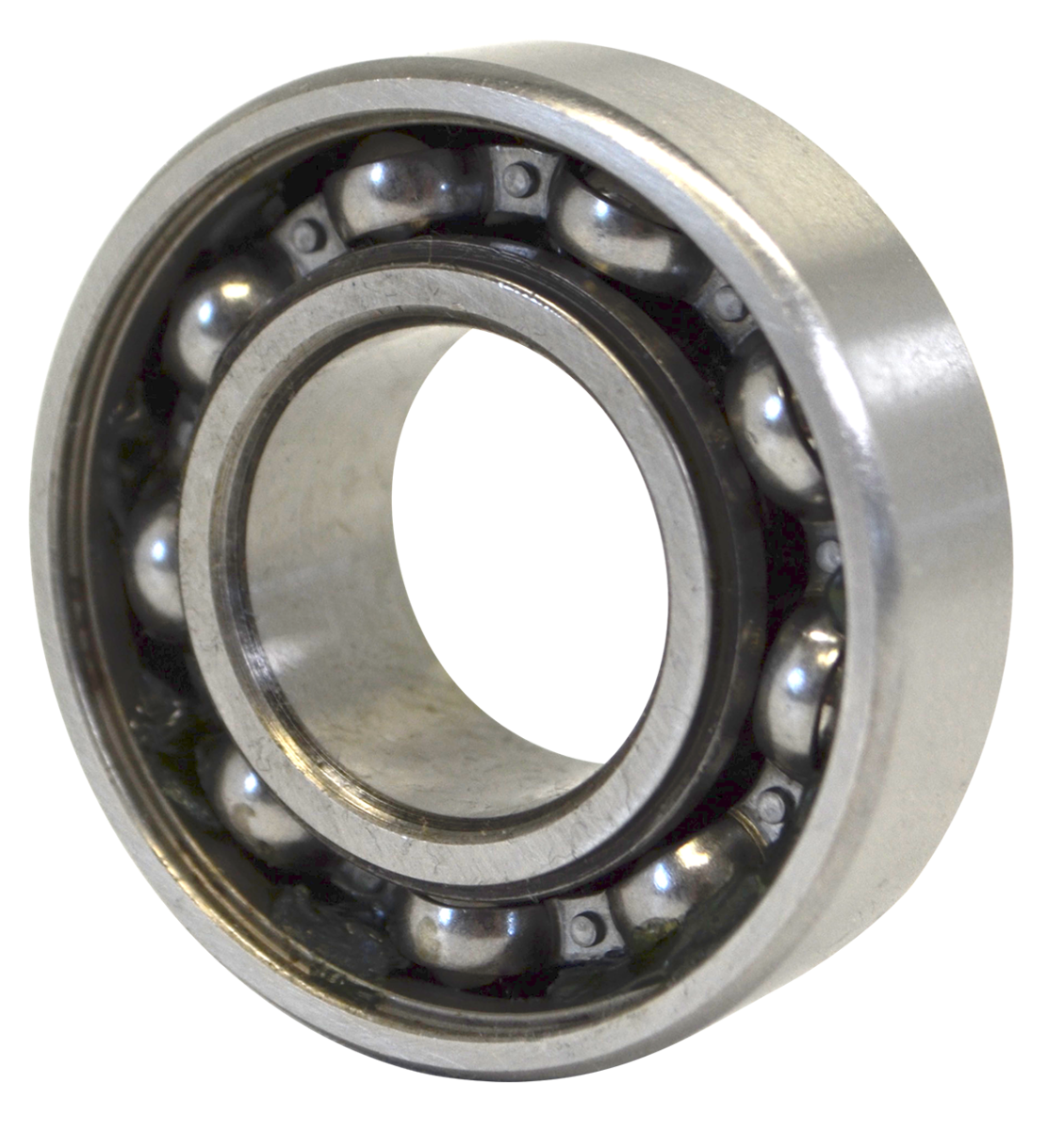
Back

Code | No Code
|
Main Function, Benefit, and Concern | • Greaseable (G) – for specific design only • Requires extra hole in axle to release trapped air while greasing • Almost maintenance free when used in low speed application • Maintenance is required if used in high speed application due to leaking grease • Rubber seals are sensitive to chemical attack – special rubber seals are required for some environments |
Where Used | • Fork, Outrigger and Stabilizing Caster Load Wheel • Single direction of force (radial load) – limited thrust load capacity • Can be used in long and continuous run |
Front

Back

Code | No Typical Coding Pattern
|
Main Function, Benefit, and Concern | • Recommended only in Greaseable (one metal shield) configuration • The inner lip/race acts as a spacer on the outside of the wheel eliminating extra components and offers a quicker and easier wheel change • Same function as nonshouldered one shield ball bearing |
Where Used | • Same usage as non-shouldered one shield ball bearing • Faster wheel replacement |
Single Row Cup and Cone
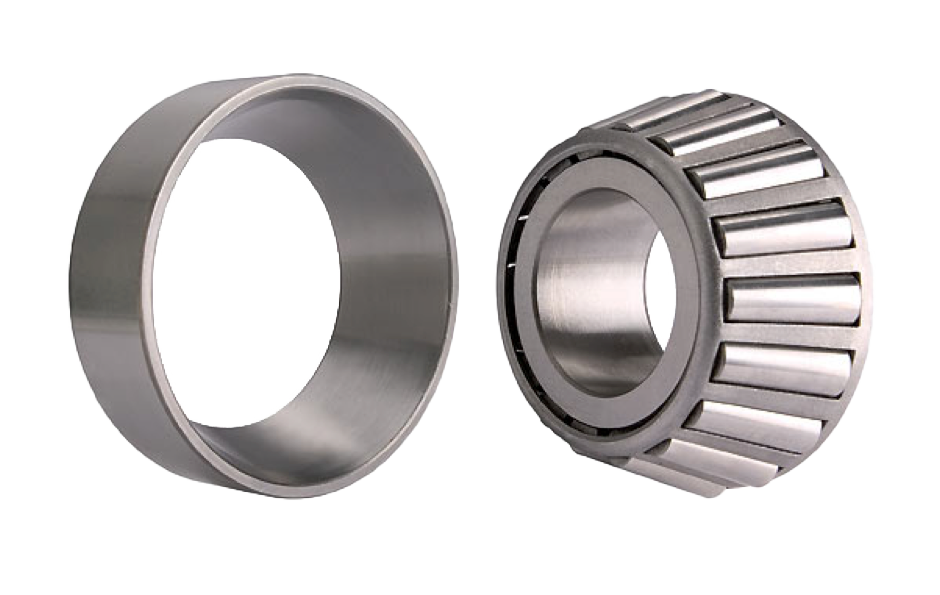
Code | No Typical Coding Pattern
|
Main Function, Benefit, and Concern | • Designed for multi-direction forces found mostly in 4th wheel casters (CL-II trucks) or drive tire • Maintenance Required • Require bearing cap to contain grease • Require locking element (lock nut or snap ring) to prevent the cup from separating from cone • Offers higher load capacity in the same size as ball bearing due to tapered roller elements which provides larger contact area |
Where Used | • Able to accept multi-directional force (radial load and thrust load) • CL-II Caster wheels or Drive tire |
Loading External Forces
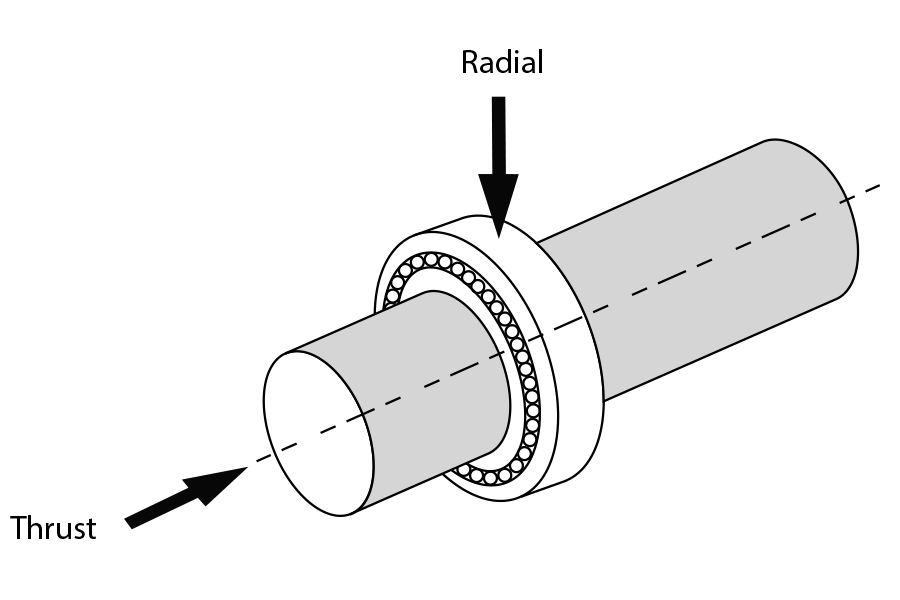
External Force | Type |
Radial Loading | Is a force perpendicular to the axis of rotation (axle), such as weight (most Load wheels) |
Thrust (Axial) Loading | A force parallel to the axis of rotation (axle), such as side impact or cornering |
Angular Loading | A combination of both radial and thrust loading resulting in an angular force acting on the bearing (most Drive tires and CL-II Caster wheels) |
Assembly Options
Options
Options depend on the make of the bearing. Please refer to the Availability tab for further information on options for bearings.
Site Prove, Customer Preferred

